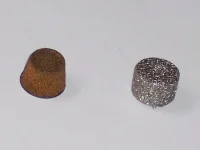eze2bme
Well-known member
- Joined
- Apr 12, 2005
- Messages
- 880
- Hatteras Model
- 43' DOUBLE CABIN (1970 - 1984)
I have just returned from the Hatteras Owner's School this week and one topic of discussion by the engine guys at Jarrett Bay pertained to stored injectors in our spare parts inventory. I wanted to express their thoughts for all to consider and get any feedback.
I hope I got all this correct: The engine guys said that spare part injectors should be sealed in air tight containers to prevent them from drying out and becoming non-operational ... often leading to engine damage if used. They said that two (2) years is about the life expectancy of injectors not in air tight containers. They did say that the injectors could be tested by a mechanic by holding them upright and hitting the bottom with your hand ... and if a bit of fluid comes out the nozzle then they MAY still be OK. (Apparently the injectors have fluid in them from the factory.) If they pass this "slap" test and the levers are moving easily then they should be filled with something like WD40 or other water dispersant and sealed in air tight containers such as a vacuum food bag.
Any thoughts by you guys?
I hope I got all this correct: The engine guys said that spare part injectors should be sealed in air tight containers to prevent them from drying out and becoming non-operational ... often leading to engine damage if used. They said that two (2) years is about the life expectancy of injectors not in air tight containers. They did say that the injectors could be tested by a mechanic by holding them upright and hitting the bottom with your hand ... and if a bit of fluid comes out the nozzle then they MAY still be OK. (Apparently the injectors have fluid in them from the factory.) If they pass this "slap" test and the levers are moving easily then they should be filled with something like WD40 or other water dispersant and sealed in air tight containers such as a vacuum food bag.
Any thoughts by you guys?


